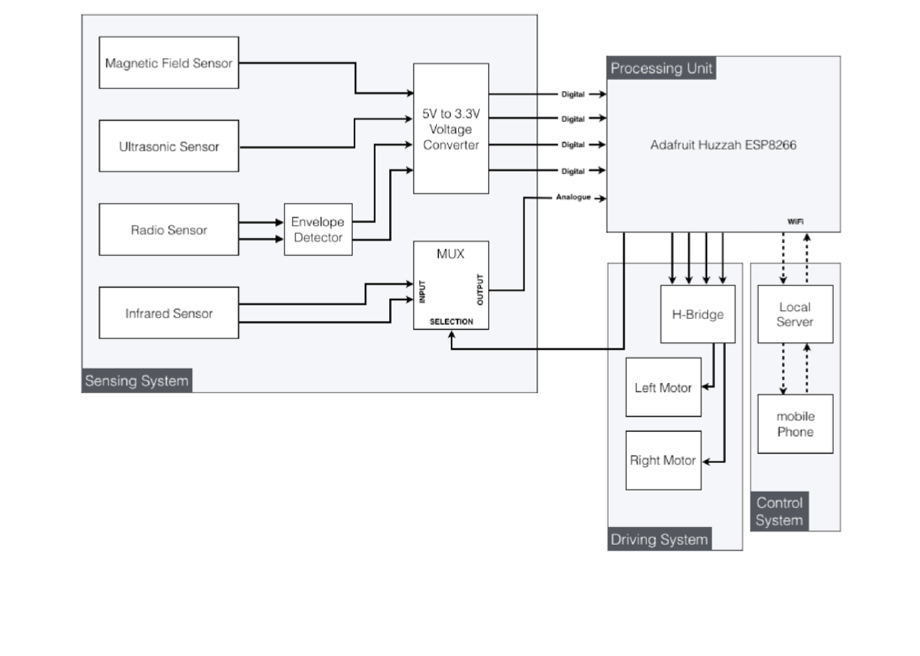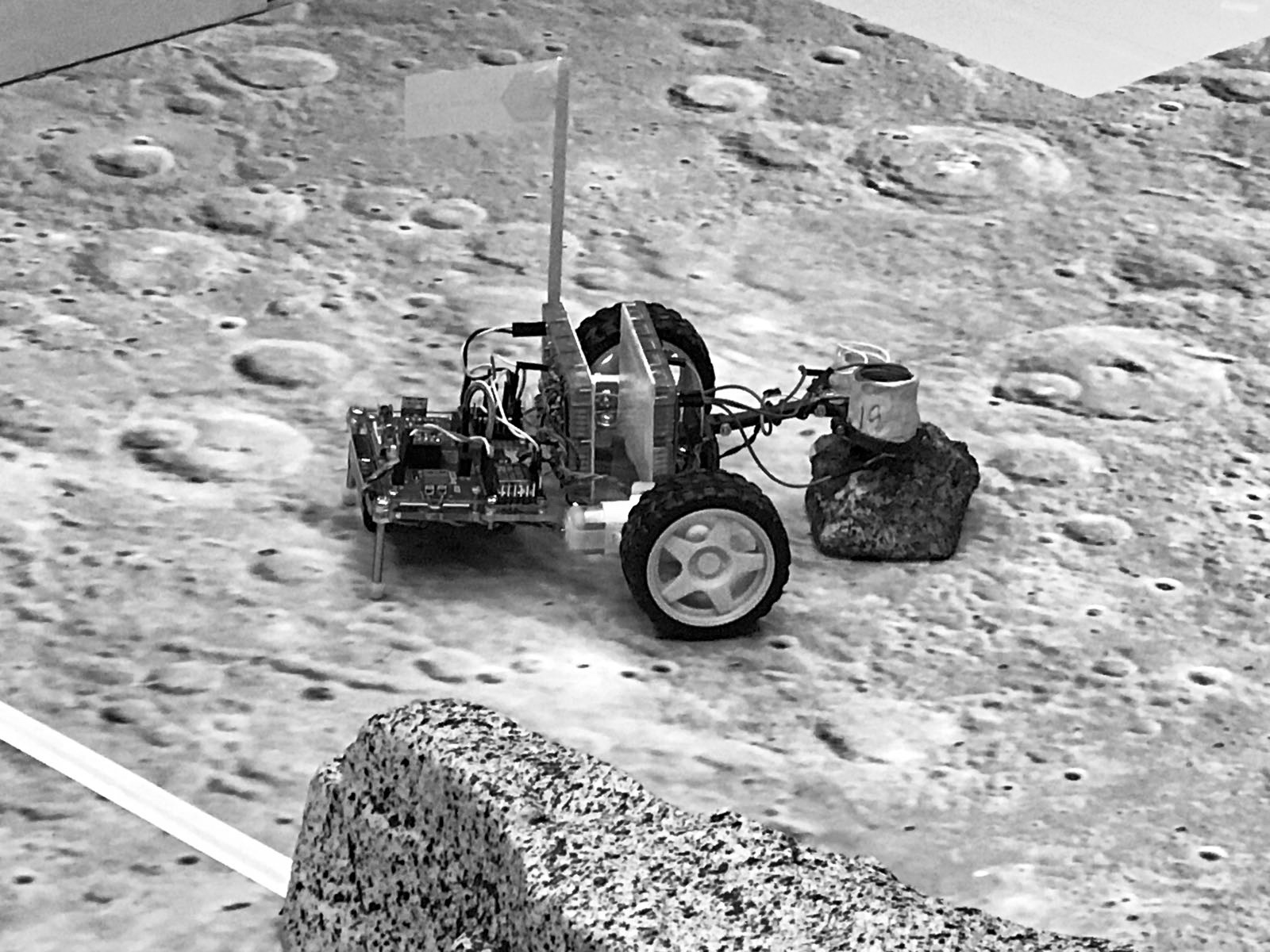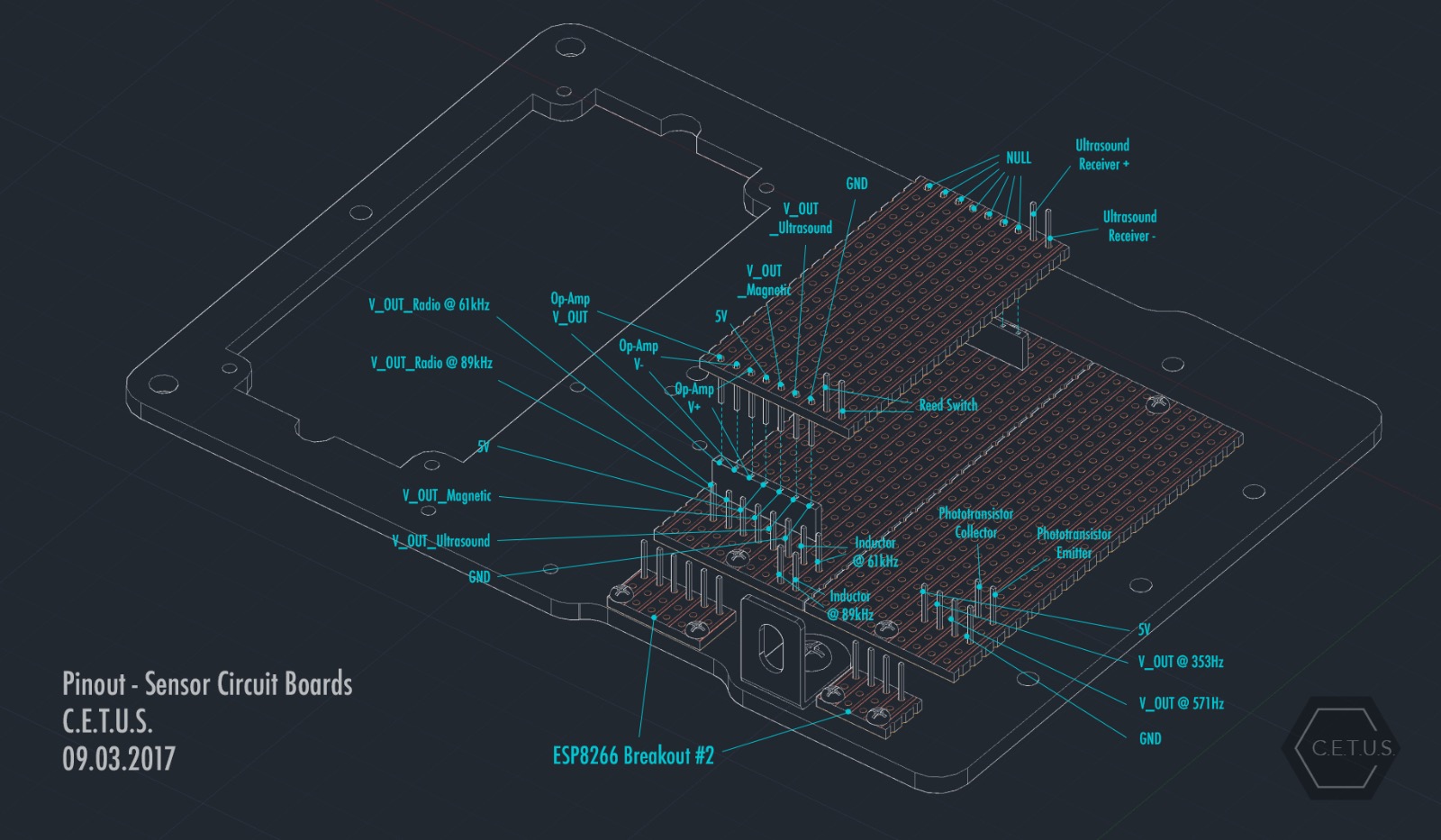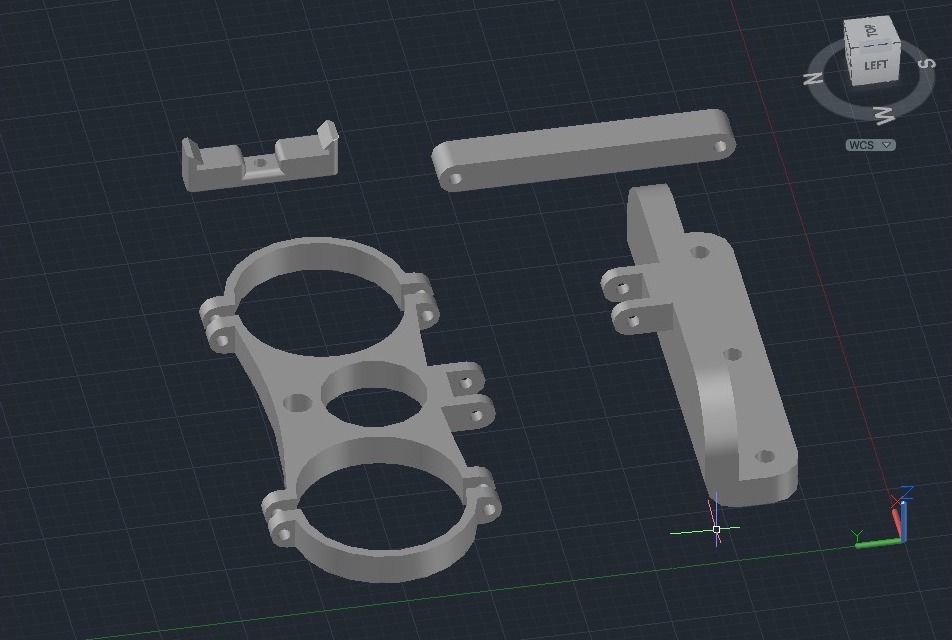The Brief
The task was to design a prototype of a remotely-controlled rover which can identify unusual minerals. The rover had to be able to distinguish several rocks by recognising their specific properties. Each rock had two of the following properties: Radio signals, ultrasound signals, infrared pulses and a magnetic field. In addition, the rover was to be controlled remotely via a wifi network. Furthermore, the rover was to have the minimum possible overall size and weight, as it had to be able to fit through a minimum sized gap of 300mm. Lastly, it was important be as manoeuvrable as possible in order to position the sensors in an optimal position to receive signals from a rock.
Design Criteria
The reliability of both the sensing system and the physical construction was crucial. The rover had to be cost and weight effective to be considered a good product. Additionally, its control had to be user-friendly. The rover was to be designed to the requirements and not exceed a budget of £50.
The task was to design a prototype of a remotely-controlled rover which can identify unusual minerals. The rover had to be able to distinguish several rocks by recognising their specific properties. Each rock had two of the following properties: Radio signals, ultrasound signals, infrared pulses and a magnetic field. In addition, the rover was to be controlled remotely via a wifi network. Furthermore, the rover was to have the minimum possible overall size and weight, as it had to be able to fit through a minimum sized gap of 300mm. Lastly, it was important be as manoeuvrable as possible in order to position the sensors in an optimal position to receive signals from a rock.
Design Criteria
The reliability of both the sensing system and the physical construction was crucial. The rover had to be cost and weight effective to be considered a good product. Additionally, its control had to be user-friendly. The rover was to be designed to the requirements and not exceed a budget of £50.



